Cornelian-cherry
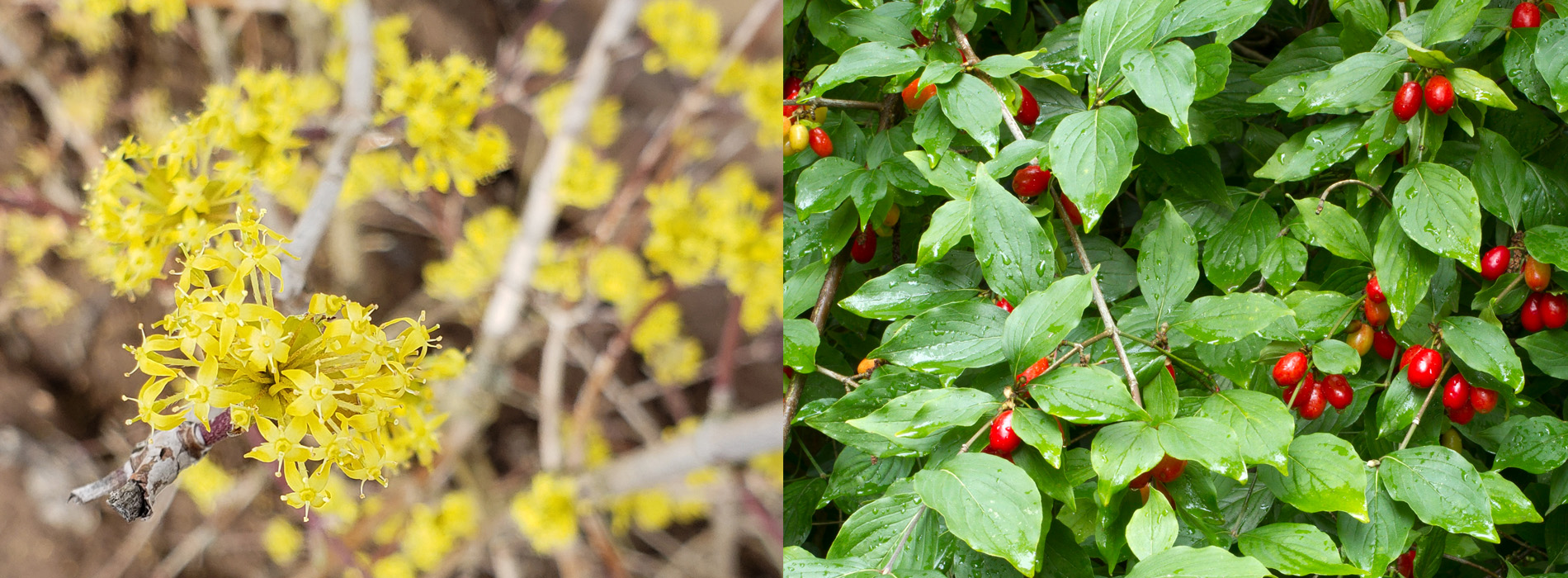
Cornelian cherry (Cornus mas) is one of the earliest blooming hedges. Beginning in late March, it has an incredible display of yellow flowers before even showing a hint of foliage. Lush green leaves will follow, as well as attractive red fruit that is desirable for birds and even has culinary value. The fruit gives it its common name, although it is not related to true cherries at all and is actually a type of dogwood. Planting whole flowering hedges of Cornelian-cherry will give you an abundant crop of tart fruit that can be made into delicious jams and jellies. One of the best flowering shrubs to be considered.
Cornus mas is deciduous and hardy to USDA zones 5-8.
Royal Star Magnolia
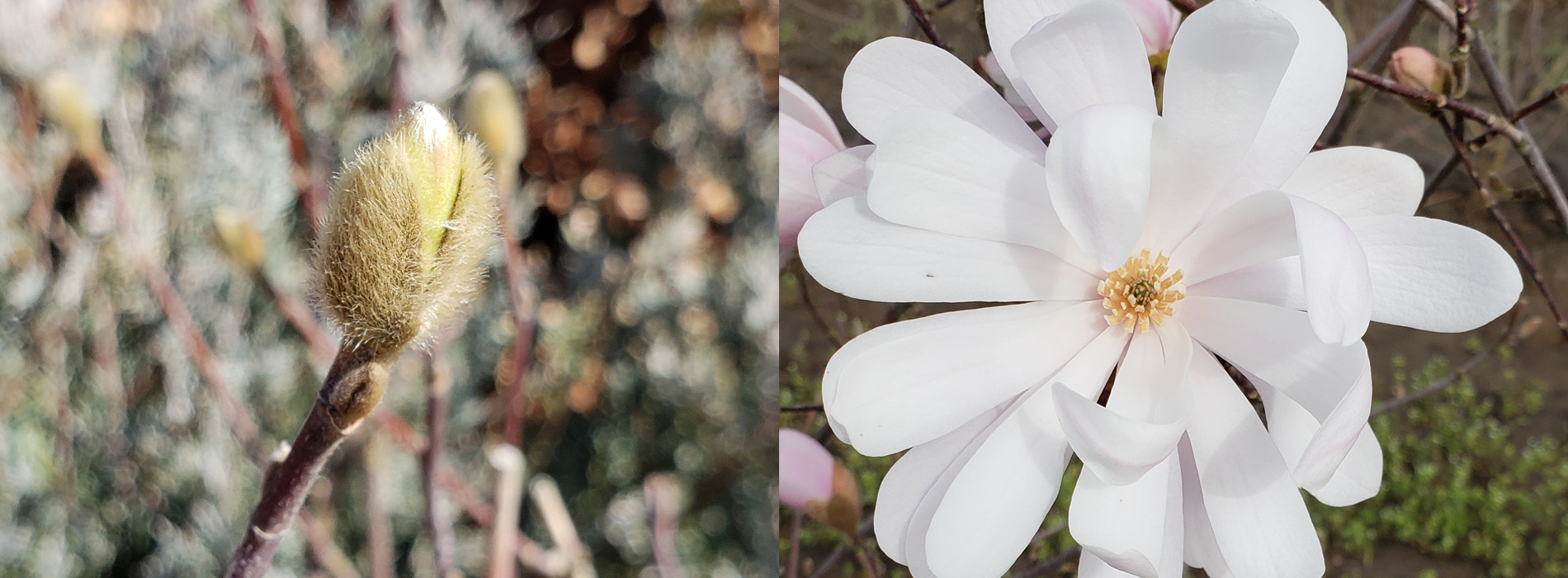
A unique and stunning flowering hedge choice, Royal Star (Magnolia stellata ‘Royal Star’) is covered in double, white, fragrant blooms in spring, followed by lush green foliage through the summer and fall. The flower buds just before blooming are delightfully fuzzy and unique as well. The flowers are the main attraction for this flowering hedge variety, so if you are looking for the hedge with the most stunning floral display, this is the one. Often grown as a standalone specimen tree, it makes even more of an impact when planted in mass as a hedge. One of the best flowering hedges or shrubs to take into consideration.
Royal Star is deciduous and hardy in USDA zones 5-9.
Cherry-laurels
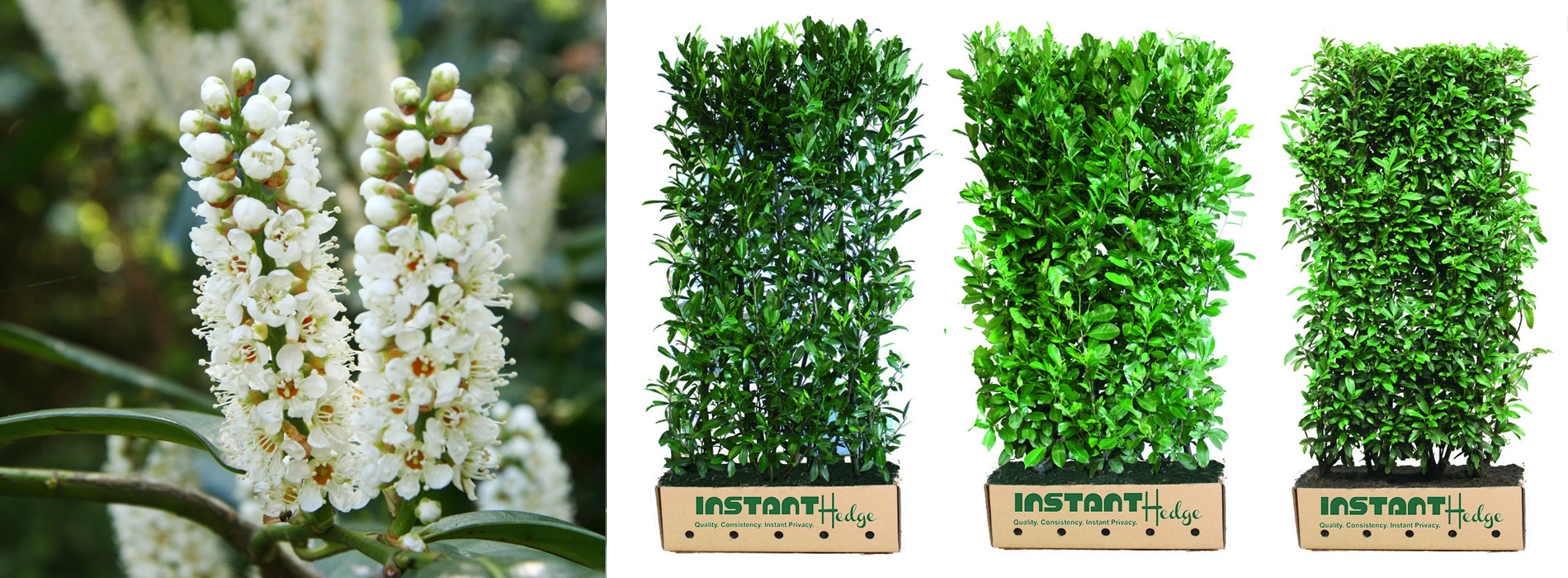
Cherry laurels are extremely popular privacy & flowering hedges because they are fast-growing and evergreen. They have the added benefit of having beautiful flowers in spring as well. English (Prunus laurocerasus), Schip (Prunus laurocerasus ‘Schipkaensis’), and Portuguese (Prunus lusitanica) cherry-laurels bloom in April-May. White flower spikes are followed by beautiful black fruits that are bird-friendly but toxic to humans and other animals. If desired, fruit set can easily be prevented by stripping the flowers from the plants in spring. One of the best flowering shrubs to plant.
Cherry-laurels are broadleaf evergreens and grow in USDA zones 6-9.
Teton Firethorn
Masses of white flowers adorn these firethorn hedges in May-June. Teton Firethorn hedges are followed by abundant, bright-orange berries that persist from fall through late winter. The berries are bird-friendly, but the plants are a deterrent for deer and prowlers as the branches have many sharp thorns. Great for planting under windows or in areas where a hedge is desired for privacy or security. Firethorn Hedges are good to consider for flowering hedges. Flowers and berries are also wonderful in floral arrangements.
Teton Firethorn is evergreen and hardy in USDA zones 6-9.
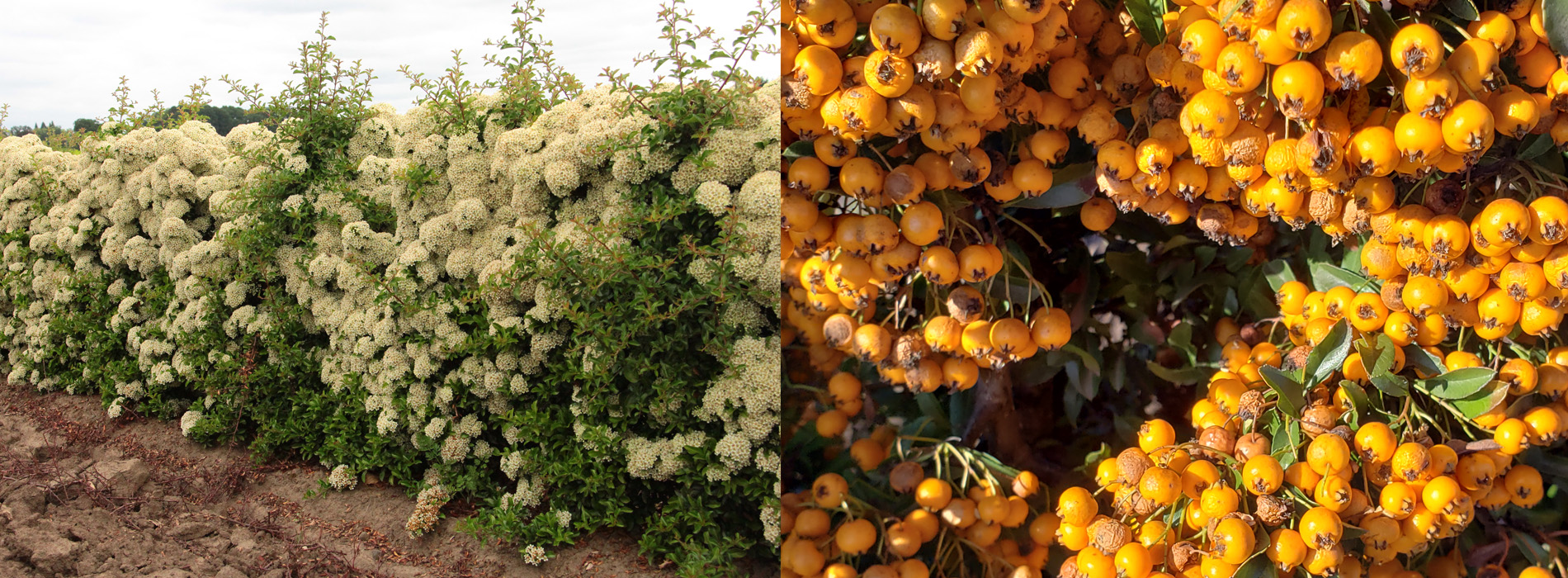
HEDGES WITH UNIQUE FOLIAGE
Of course, hedging plants don’t have to flower to be unique and colorful. There are some other great options to add interest without flowers.
Purple Beech
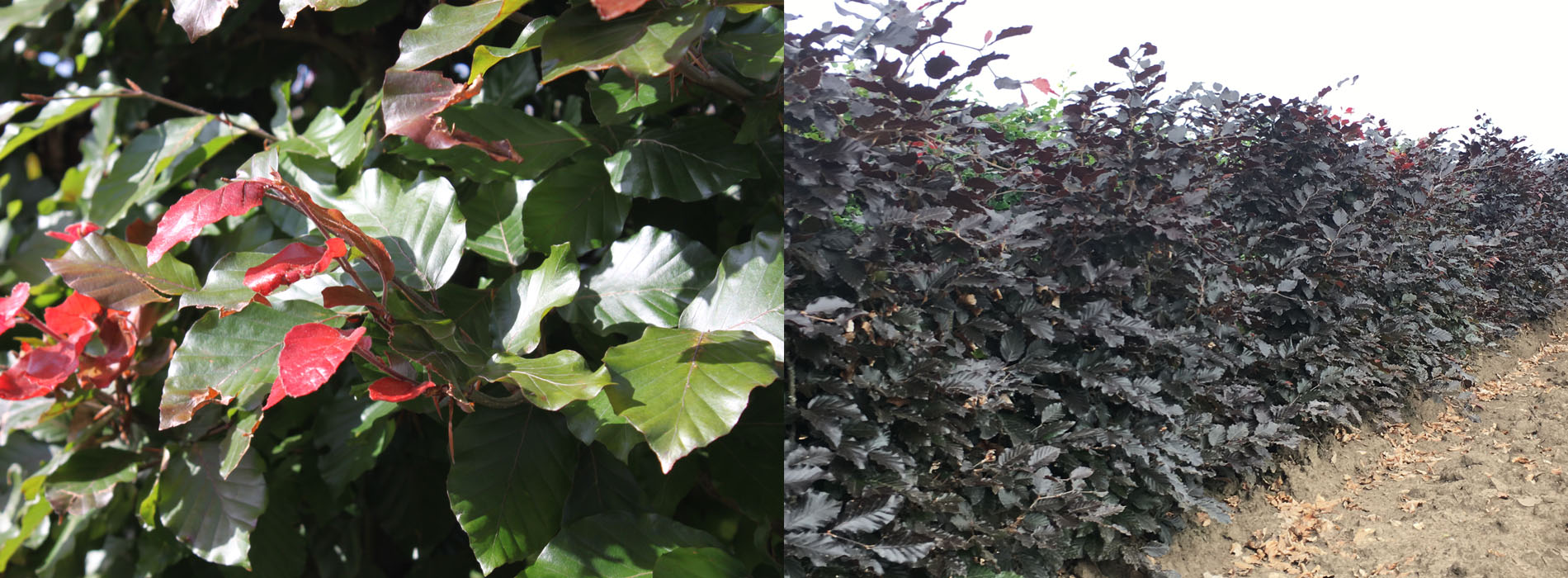
With stunning, dark foliage, Purple or Copper Beech is a real showstopper for Ornamental hedges! It is easy to create a dramatic landscape when using the dark and luxurious purple leaves of this beech type. Spring growth is brilliant red, darkening to a rich purple through the summer.
Purple Beech is deciduous and is hardy in USDA zones 5-8.
Bald Cypress
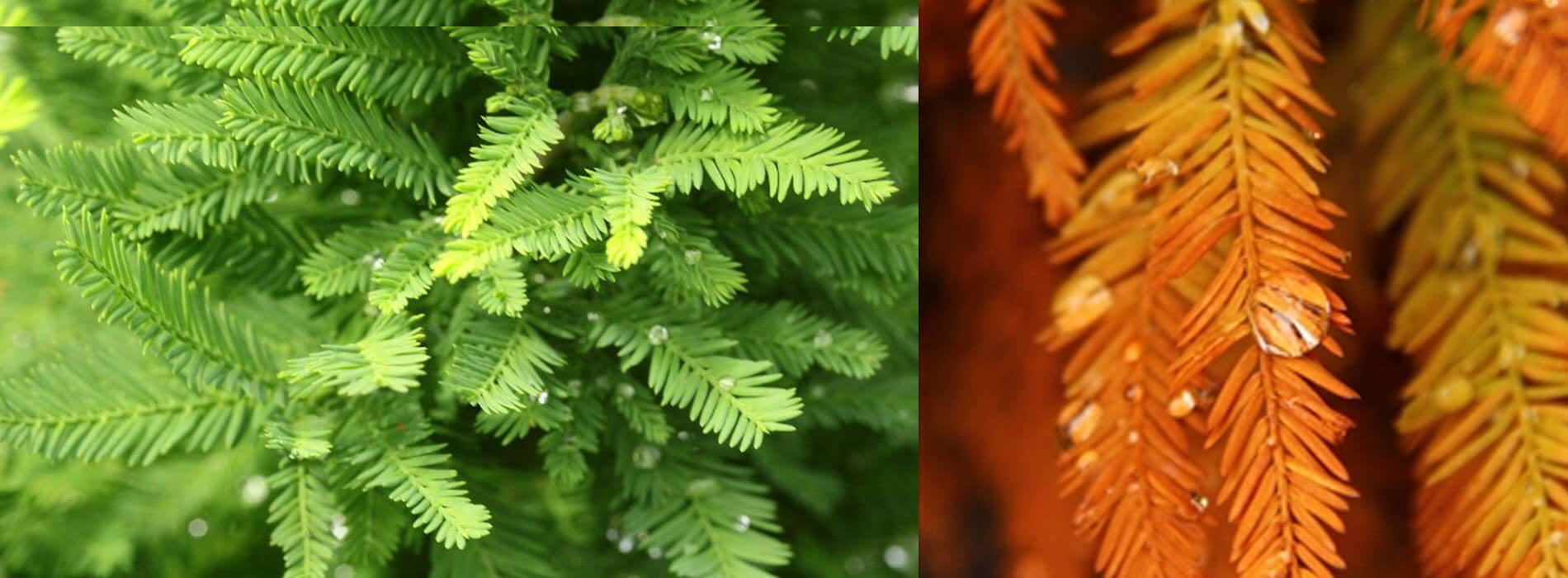
Bald Cypress (Taxodium distichum) is an unusual conifer for several reasons. First, it is a deciduous conifer, which can seem like an oxymoron as most people tend to think of the words “conifer” and “evergreen” as being synonymous. There are actually several species of conifers that lose their needles in the winter, and Taxodium is one of them. The great thing about this is the seasonal color change. Springtime brings fresh, brilliant greens, followed by lush greens throughout the summer. Finally, the show really starts in fall as the copper/orange hues take over before the foliage drops for winter. The second thing that distinguishes Taxodium from typical conifers is its wonderful tolerance of wet conditions. Most plants suffer if planted in areas with consistent standing water, but not so with the Bald Cypress. It is native to the swamps and bayous of Louisiana, and does not suffer in the slightest in soggy areas. One of the best flowering hedges alternative to take into consideration.
Bald Cypress is deciduous and hardy in USDA zones 5-10.